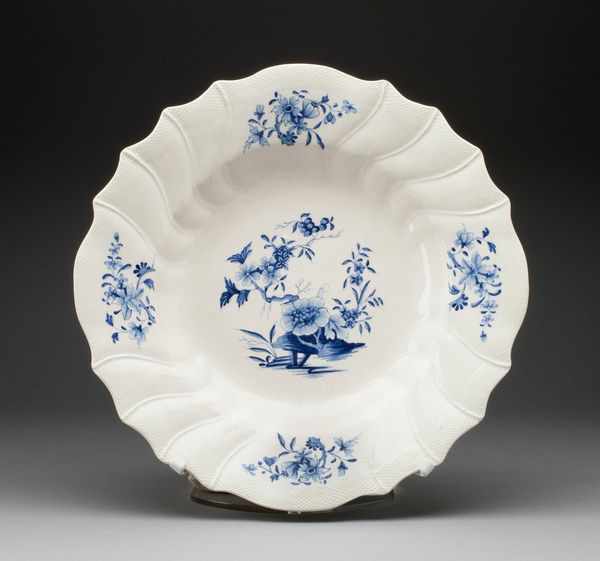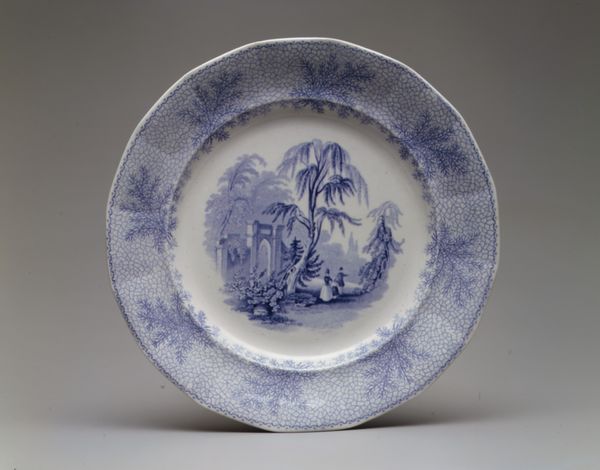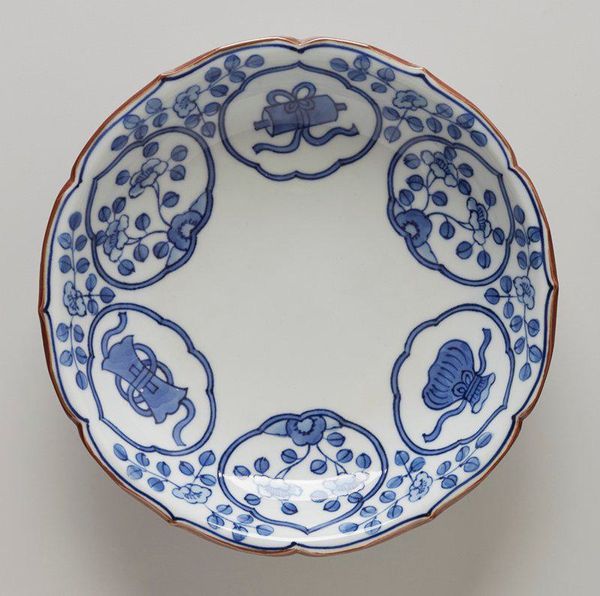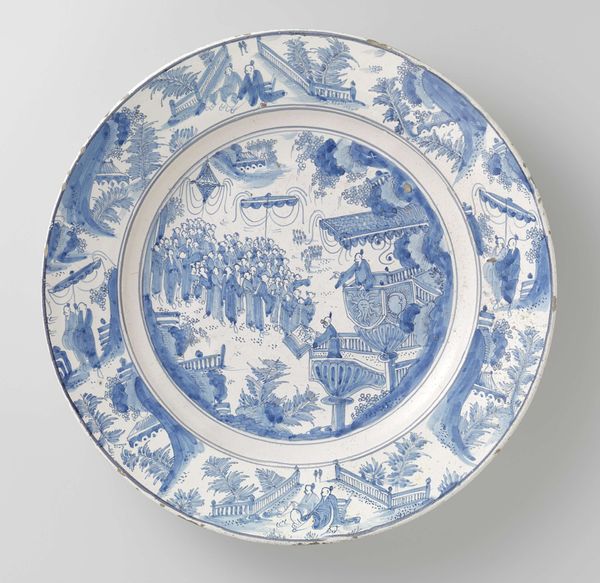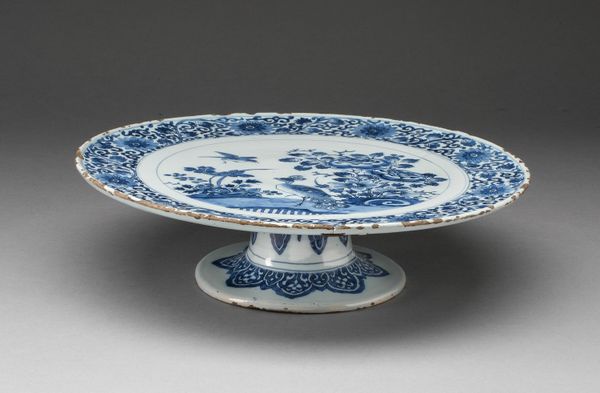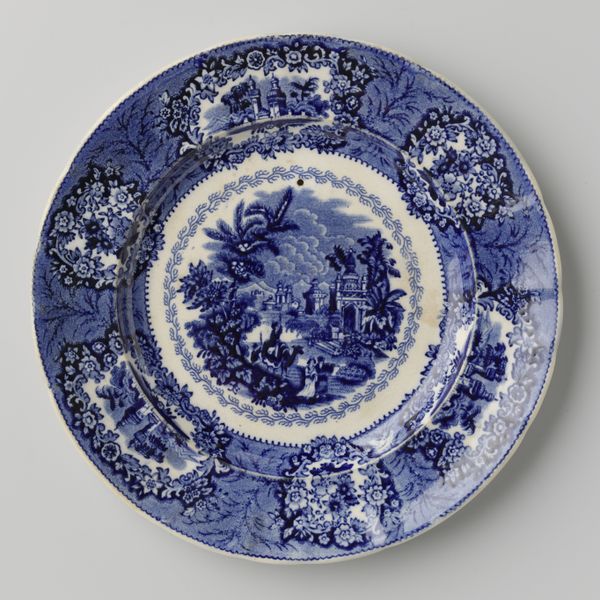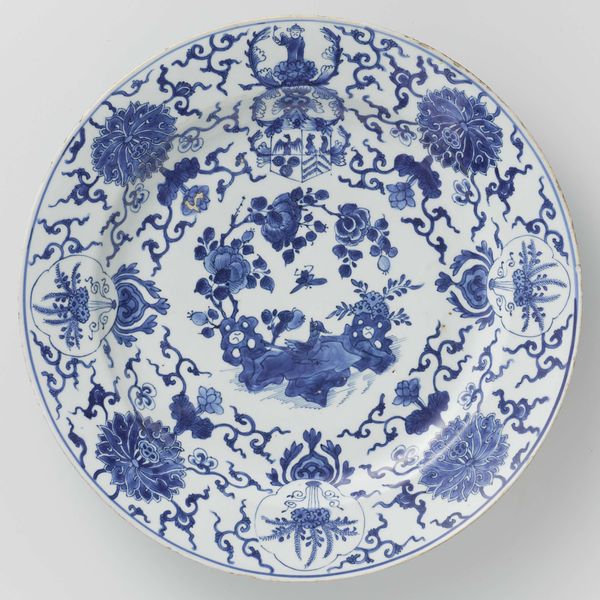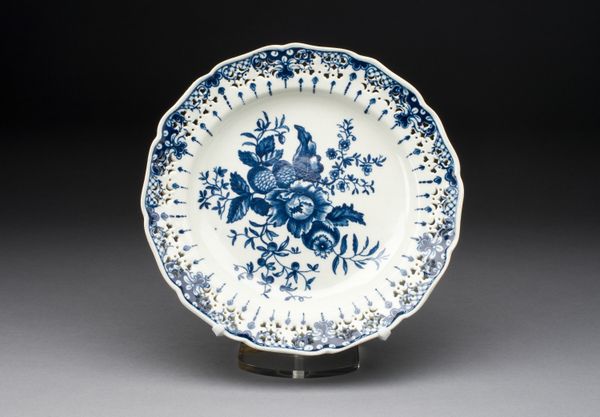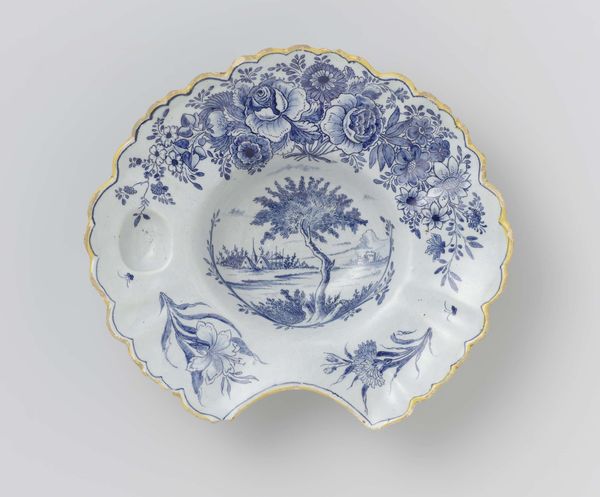
ceramic
#
asian-art
#
ceramic
#
orientalism
#
ceramic
Dimensions: H. 3 7/16 in. (8.7 cm); Diam. 12 1/16 in. (30.6 cm)
Copyright: Public Domain
Curator: Good morning. We are looking at an 18th-century barber's bowl by Cornelis Pronk, currently housed in the Metropolitan Museum of Art. Editor: The monochromatic blue on white immediately gives it a calming sensibility, almost like gazing at a wintry landscape. What I find most striking is the asymmetry of the design. Curator: The bowl, a ceramic piece, exemplifies a popular artistic trend during that era: Orientalism. Notice the distinctly Asian-inspired scene depicted within it. It speaks volumes about trade routes and cultural exchange in the 18th century. The visual vocabulary became a signifier of wealth, cosmopolitanism, and European dominance. Editor: Indeed. If we focus on the structure, the swirling motifs in the periphery frame the central figures creating depth while confining our vision. I can identify three subjects interacting with gestures which read to me like formalized narrative tropes. Curator: I agree, and from an intersectional perspective, examining these motifs critically becomes essential. It reveals colonial power dynamics and how the Orient was reimagined to suit European tastes. Who does it benefit? Why certain visual languages? Editor: Focusing on the artist, Pronk did not literally visit China, but worked using descriptions or pre-existing paintings. This speaks to a kind of “secondary Orientalism” that's less interested in pure cultural translation than creating pastiche. I note especially how Western shading creates a certain hybrid pictorial depth despite the graphic character. Curator: Absolutely. We should critically examine these constructed realities of China offered for consumption, understanding their socio-political underpinnings. Were the Chinese equally creating imitations of the West, or was that a privilege only extended to certain actors within colonialism? Editor: It truly displays an artful interplay of balance. Curator: A powerful statement indeed of art, identity, and power.
Comments
No comments
Be the first to comment and join the conversation on the ultimate creative platform.

